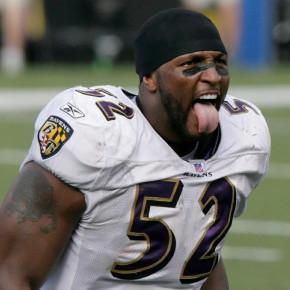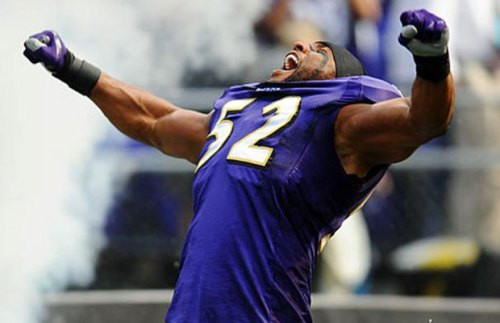Ray Lewis. The name itself conjures up images of fierce intensity, unwavering leadership, and of course, that dance. For years, the linebacker’s pre-game ritual became as iconic as his play on the field, a spectacle that both mesmerized and, for some, grated. As we look back at his legendary career, and especially his final Super Bowl run with the Baltimore Ravens, it’s impossible to separate Ray Lewis the player from Ray Lewis the performer, the man who made the “Ray Lewis Dance” a cultural phenomenon.
 Ray Lewis in action
Ray Lewis in action
For some, including the author of the original article, the “ray lewis dance” was, to put it mildly, “oppressively distasteful.” It could be seen as boastful, showy, and intensely self-absorbed. Exhibit A, as the original piece points out, was Lewis’s appearance on the field for the final kneel-down snap against the Broncos in his last home game. A defensive player taking center stage during an offensive play, solely to launch into his signature moves? It certainly fueled the perception of a player craving attention, even in moments that weren’t directly about him. This feeling was amplified by the anticipation of Lewis transitioning to television commentary, promising even more exposure post-retirement.
Beyond the on-field theatrics, there was, of course, the shadow of Ray Lewis’s past. The article rightly touches upon the serious allegations surrounding the 2000 murder investigation and Lewis’s involvement. For many, this historical context cast a darker hue on everything Lewis did, including his celebrated dance. The question of how to reconcile the on-field heroics and the public persona with the off-field controversies was a constant undercurrent in the Ray Lewis narrative.
 Ray Lewis signature dance pose
Ray Lewis signature dance pose
The author of the original piece grapples with this very conflict, admitting to using the controversies to justify a dislike of Lewis, fueled partly by team rivalry (being a Steelers fan). The comparison to Michael Vick’s dog fighting scandal highlights the perceived disparity in public reaction and judgment towards athletes who have made serious mistakes. The core of the author’s struggle lies in the human tendency to define ourselves by comparison, to feel “better than” someone else. Ray Lewis, with his flaws and his very public persona, became an easy target for such comparisons.
However, the article pivots towards a crucial point: redemption. Ray Lewis’s narrative is not just one of controversy, but also of transformation. By many accounts, he underwent a significant personal evolution after the 2000 incident, embracing religion and becoming a figure of mentorship and community leadership. This redemption arc challenges the initial negative perception of the “ray lewis dance.” Could the dance, initially seen as self-aggrandizing, also be interpreted as an expression of this personal transformation, a celebration of overcoming adversity?
Perhaps the “ray lewis dance” is more complex than a simple ego trip. It’s a performance, yes, but also a ritual, a declaration of self, and maybe, in its later years, even a symbol of personal redemption played out on the grand stage of the NFL. Whether you found it captivating or cringeworthy, the “ray lewis dance” is undeniably intertwined with the Ray Lewis legend, a visual shorthand for a career and a persona that sparked strong emotions and complex reflections, both on and off the field, right up to his Super Bowl victory.
